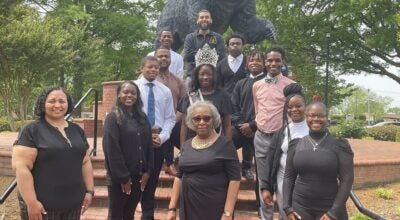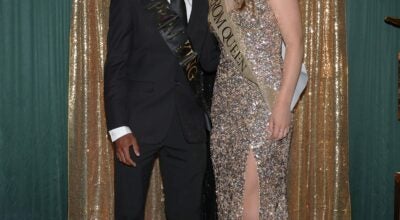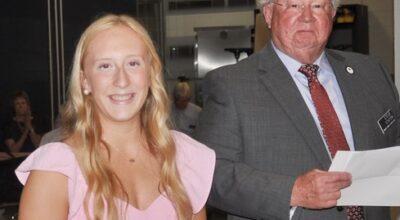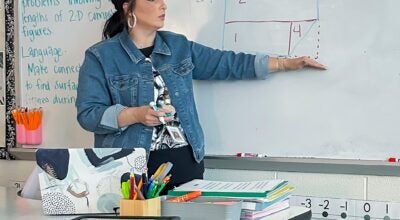Open house lets students demonstrate science skills
Published 12:00 am Saturday, October 22, 2011
By Hugh Fisher
hfisher@salisburypost.com
KANNAPOLIS — Not only did schoolchildren from around Kannapolis enjoy going to school on Saturday, but they got treats for doing so.
In one lab classroom, a group of children and parents watched Travis Allen, a third-grade teacher from Woodrow Wilson Elementary School, as he instructed them to add sugar, vanilla and milk to a plastic sandwich bag.
They put those into bigger plastic bags filled with rock salt and water.
As he explained how matter has three main forms — solid, liquid and gas — the kids shook their plastic bags vigorously.
He explained how the rock salt makes the ice melt and become colder at the same time, making the ingredients in the bag turn from liquid to semi-solid.
“Now, I’ll hand out spoons so you can try your ice cream,” Allen said.
With this, and other fun hands-on activities, children and parents from Kannapolis City Schools got a taste of the new curriculum in store at the Kannapolis STEM Open House at A.L. Brown’s new technology wing.
The 50,000-square-foot facility includes 12 science labs, seven general classrooms, six science rooms and two computer labs.
The public got to tour the facility at an open house held in September.
But this was the first time students from across the district got to show off their skills in the four STEM areas — Science, Technology, Engineering and Math.
“We wanted a chance for the elementary students to get to come over here, and to let everybody know that every level, K through 12, is doing STEM education in their schools,” KCS Assistant Superintendent Debra Morris said.
“This can get them excited about what awaits them in high school.”
In another classroom, Jordan Baker, who teaches engineering courses at A.L. Brown, supervised students as they demonstrated robotics and a computer design program called Inventor.
Julian Delgado, 8, got to take the remote control and pilot a robot around the classroom aisle.
The robot’s arm is designed to pick up a tennis ball, demonstrating how the different systems can work together to provide movement.
“I was interested in what they’re offering,” his mother, Norma Delgado, said. “I would like Julian to get to know about technology and science.”
Julian, a student at Woodrow Wilson Elementary, said he’d like to build something similar to that robot himself someday.
“I like showing the kids what we’re doing,” said Caleb Hicks, a ninth-grade student in Baker’s Introduction to Engineering Design class.
“I really hope to go into engineering, and go to an engineering college,” Hicks said.
Baker said he hoped the public, especially younger students, would see the opportunities that await them at the high school level.
In other classrooms, children got hands-on experience in engineering.
Students used plastic rods and connectors to build model box-girder bridges.
They then could roll cars across and test their creations for stability using wheeled weights.
As his daughter Daisy, 5, rolled the weight across a bridge she and her brother Eustacio had built, Jose Medina looked on.
Daisy is a kindergartner at Forest Park Elementary. Eustacio, 11, goes to Kannapolis Intermediate School.
Medina said it gave him hope for his children’s future to see them show off what they had learned.
Another kindergartner, Noah Lyon of Woodrow Wilson Elementary, learned those lessons while also seeing where his mother works.
Cindy Lyon works in the health and physical education department at A.L. Brown.
“It gives (students) an idea of what they want to do when they get older,” she said. “Hands-on is the best kind of learning.”
Other activities throughout the four-story complex included demonstrations of DNA fingerprinting, physical fitness challenges and a hands-on geometry lesson.
“We’re making polygon pumpkins,” said Joseph Witkowski, 8, in a classroom where students from Shady Brook Elementary were holding their demonstrations.
Using orange and yellow construction paper, students got to glue triangle teeth, hexagon eyes and trapezoid noses to make funny faces.
Joseph’s mother, Rebecca, said she was glad to see the excitement her son and other children had for what they were learning.
Dawn Nestvogel, whose daughter Anneka demonstrated forces and inertia using a rubber-band catapult, agreed.
“It’s really exciting to see what they can do when they have open-ended questions, and when they can incorporate science, engineering and mathematics,” Nestvogel said.
KCS Superintendent Pamela Cain said she was pleased with the turnout and the opportunities families had to experience what students can learn.
Contact Hugh Fisher via the editor’s desk at 704-797-4244.





